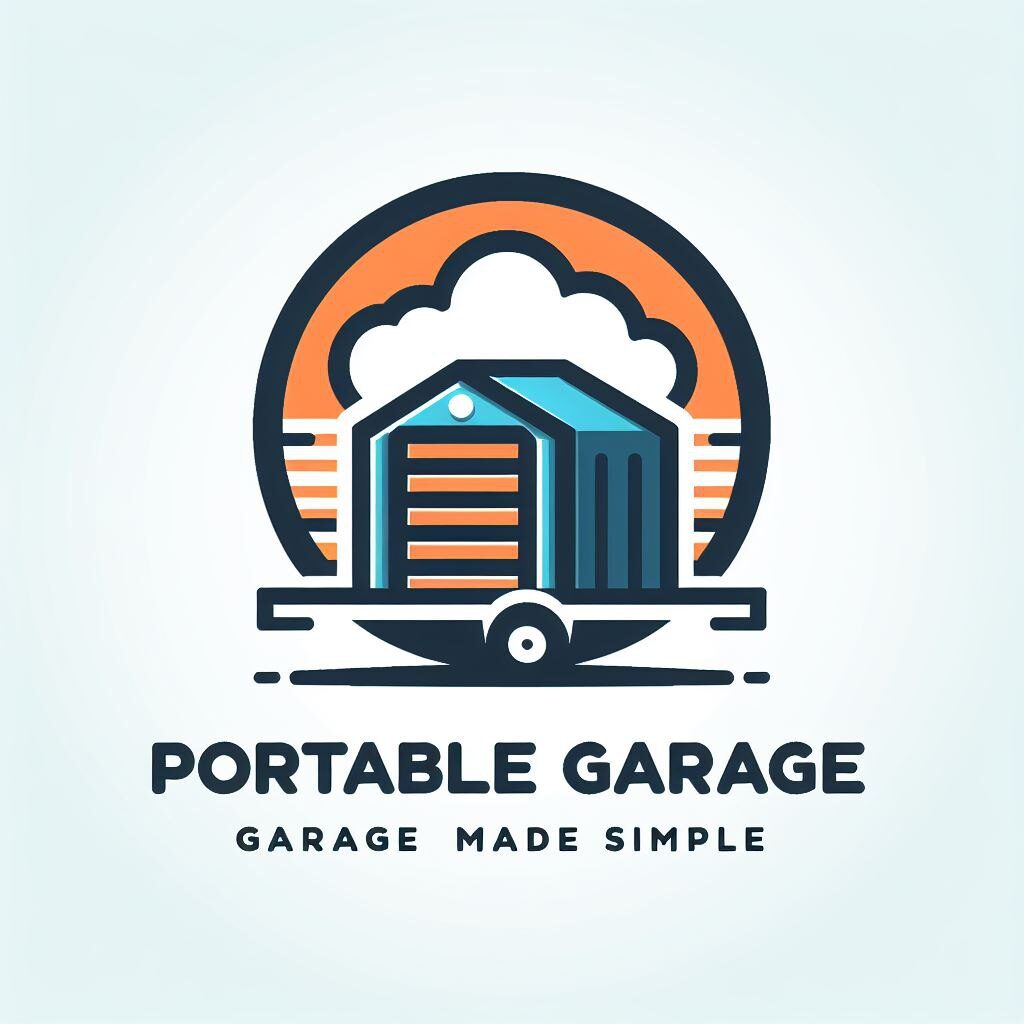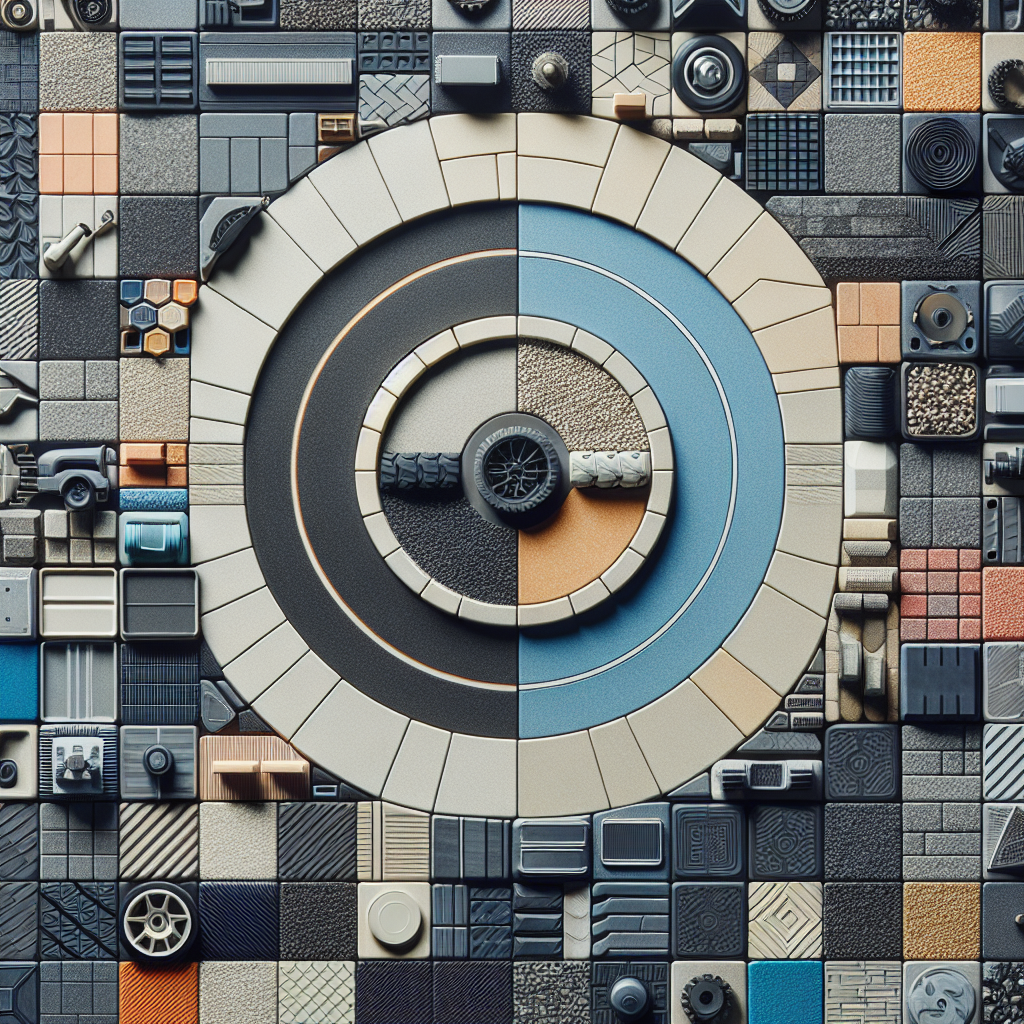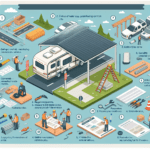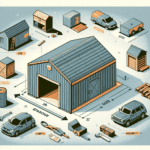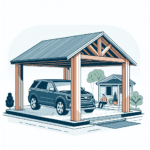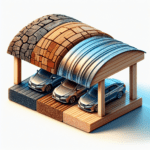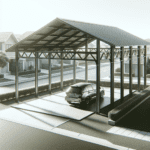Are you in the process of building or renovating a carport and unsure of which flooring option to choose? Look no further! This article will serve as a comprehensive guide to help you make the right decision. From practical tips to a range of flooring options, we’ve got you covered. Say goodbye to the confusion and let us provide you with the clarity you need to choose the perfect flooring for your carport.
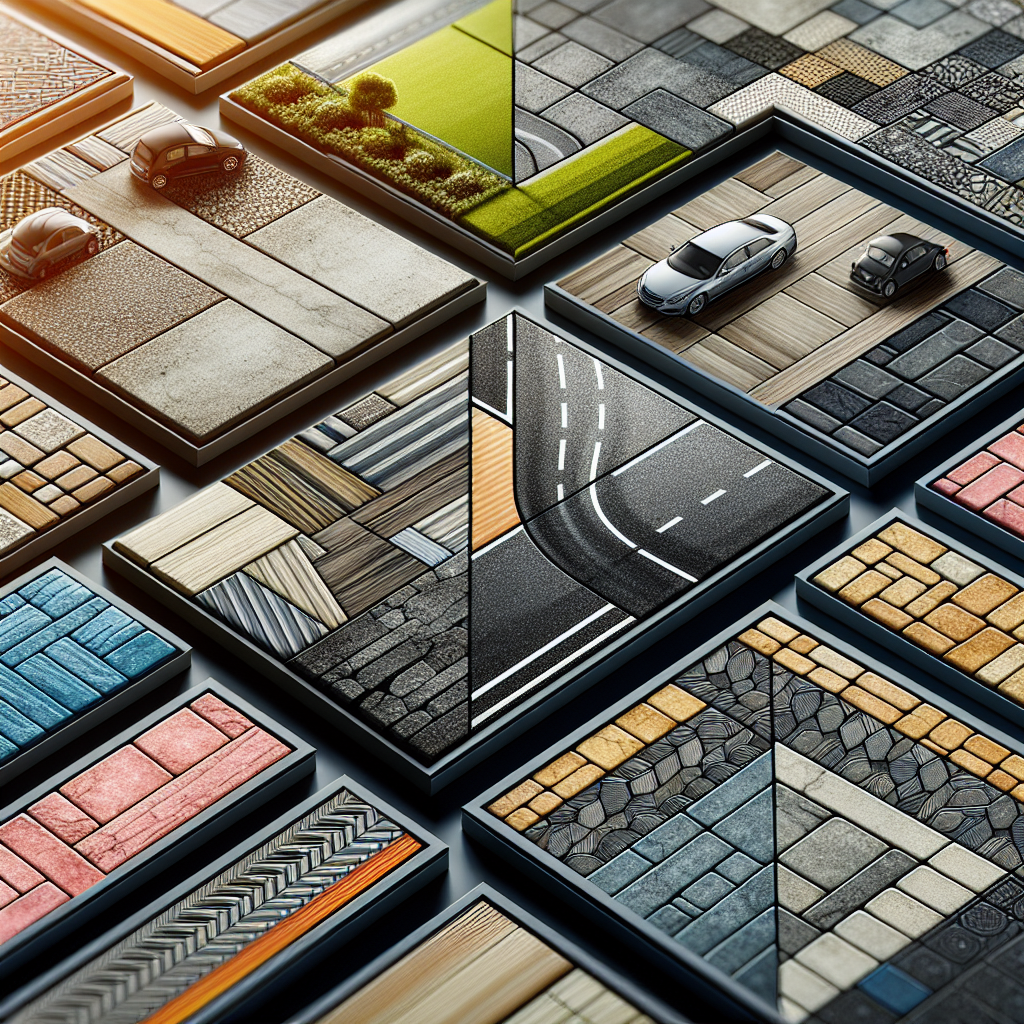
Determining Your Needs
When it comes to choosing the perfect flooring for your carport, it’s important to consider your specific needs. By evaluating the purpose of your carport, the climate and weather conditions in your area, the amount of traffic it will receive, and your budget, you can make an informed decision that will meet your requirements.
Consider the Purpose of Your Carport
The first step in determining your flooring needs is to consider the purpose of your carport. Are you simply looking for a space to park your car? Or do you plan on using your carport as a multipurpose area for entertaining or storage? Understanding how you will use the space will help you select a flooring material that can withstand the intended activities.
Evaluate the Climate and Weather Conditions
The climate and weather conditions in your area play a significant role in choosing the right flooring for your carport. If you live in an area with harsh winters, you’ll need a flooring material that can withstand freezing temperatures and resist damage from snow and ice. On the other hand, if you live in a hot and humid climate, you’ll need a material that can withstand high temperatures and humidity without warping or deteriorating.
Assess the Amount of Traffic
Another important factor to consider is the amount of traffic your carport will receive. If you have multiple vehicles coming and going frequently, you’ll need a durable flooring material that can handle heavy loads and resist wear and tear. However, if your carport will mostly be used for occasional parking, you may have more flexibility in choosing a lighter-duty flooring option.
Think about the Budget
Finally, it’s essential to consider your budget when selecting carport flooring. Different flooring materials come at varying price points, so it’s important to determine what you can afford before making a decision. Remember to factor in not only the initial cost of the flooring material but also any additional expenses for installation, maintenance, and repairs.
Understanding Different Flooring Options
Once you have determined your needs, it’s time to explore the various flooring options available for your carport. Each flooring material comes with its own set of benefits, drawbacks, and maintenance requirements. By understanding the characteristics of each option, you can make an educated choice that suits your specific circumstances.
Concrete
Concrete is a popular flooring option for carports due to its durability and affordability. It can withstand heavy loads, resist oil and chemical spills, and is relatively easy to clean. However, concrete can be prone to cracking and may require regular sealing to maintain its appearance and prevent moisture damage.
Gravel
Gravel is a low-cost and easy-to-install flooring option for carports. It provides good drainage and can withstand heavy loads. However, gravel may shift over time and can be challenging to walk on or roll objects over. Regular maintenance is required to replenish and level the gravel.
Pavers
Pavers are a versatile and aesthetically pleasing option for carport flooring. They are available in a variety of colors, shapes, and textures, allowing for creative design possibilities. Pavers are durable, requiring little maintenance, and can withstand heavy loads. However, they can be more expensive than other options and may require professional installation.
Asphalt
Asphalt is a durable and affordable choice for carport flooring. It provides a smooth and level surface, making it easy to walk on and park vehicles. Asphalt is resistant to oil and chemical spills, but it may require periodic sealing to maintain its appearance and prevent cracking.
Rubber Mats
Rubber mats are a versatile and comfortable option for carport flooring. They provide excellent traction, are resistant to impact and vibration, and offer cushioning for long periods of standing. However, rubber mats may not be suitable for heavy vehicles and can be more challenging to clean compared to other materials.
Interlocking Tiles
Interlocking tiles are a popular choice for carport flooring due to their ease of installation and versatility. They come in a variety of materials, including rubber, PVC, and polypropylene, offering different levels of durability and aesthetic options. Interlocking tiles can withstand heavy loads, are easy to clean, and can be replaced individually if damaged.
Epoxy Coating
Epoxy coating is a durable and sleek option for carport flooring. It provides a seamless and chemical-resistant surface that is easy to clean and maintain. Epoxy coating is available in different colors and finishes, allowing for customization. However, the installation process can be time-consuming and requires proper surface preparation.
Vinyl
Vinyl flooring is a versatile and cost-effective option for carports. It is available in various styles, colors, and patterns, allowing for customization to suit your design preferences. Vinyl is resistant to moisture, stains, and scratches, making it easy to clean and maintain. However, it may not be as durable as other options and can be susceptible to fading in direct sunlight.
Rubber Flooring
Rubber flooring is a durable and slip-resistant option for carports. It provides excellent traction, absorbs impact, and reduces noise. Rubber flooring is easy to clean and maintain, making it a popular choice for high-traffic areas. However, it can be more expensive than other materials, and some rubber products may emit a strong odor initially.
Hardwood
Hardwood flooring adds a touch of elegance and warmth to a carport. It is durable and can withstand heavy loads and moisture when properly sealed. Hardwood flooring is available in a variety of wood species and finishes, allowing for customization. However, hardwood requires regular maintenance, including refinishing and resealing, to prevent damage from moisture and UV exposure.
Concrete Flooring
Concrete flooring is a practical and widely used option for carports. It offers several benefits, but it also has some drawbacks and specific maintenance requirements that you should be aware of.
Benefits of Concrete Flooring
Concrete is known for its durability and strength, making it an ideal flooring material for high-traffic areas like carports. It can withstand the weight of vehicles without cracking or sagging. Concrete is also resistant to oil stains and chemicals, making it easy to clean and maintain. Additionally, concrete can be polished or textured to enhance its appearance and provide better traction.
Drawbacks of Concrete Flooring
One drawback of concrete flooring is that it can crack over time, especially in areas with freeze-thaw cycles. Additionally, concrete can be cold and hard underfoot, making it uncomfortable for long periods of standing or walking. It may also require regular sealing to prevent moisture damage and staining.
Maintenance Tips
To maintain concrete flooring in your carport, it is recommended to sweep or vacuum regularly to remove dirt and debris. Spills should be cleaned up promptly to prevent staining. Periodic sealing is necessary to protect the concrete from moisture and maintain its appearance. Additionally, concrete floors can benefit from occasional polishing to enhance their shine and durability.
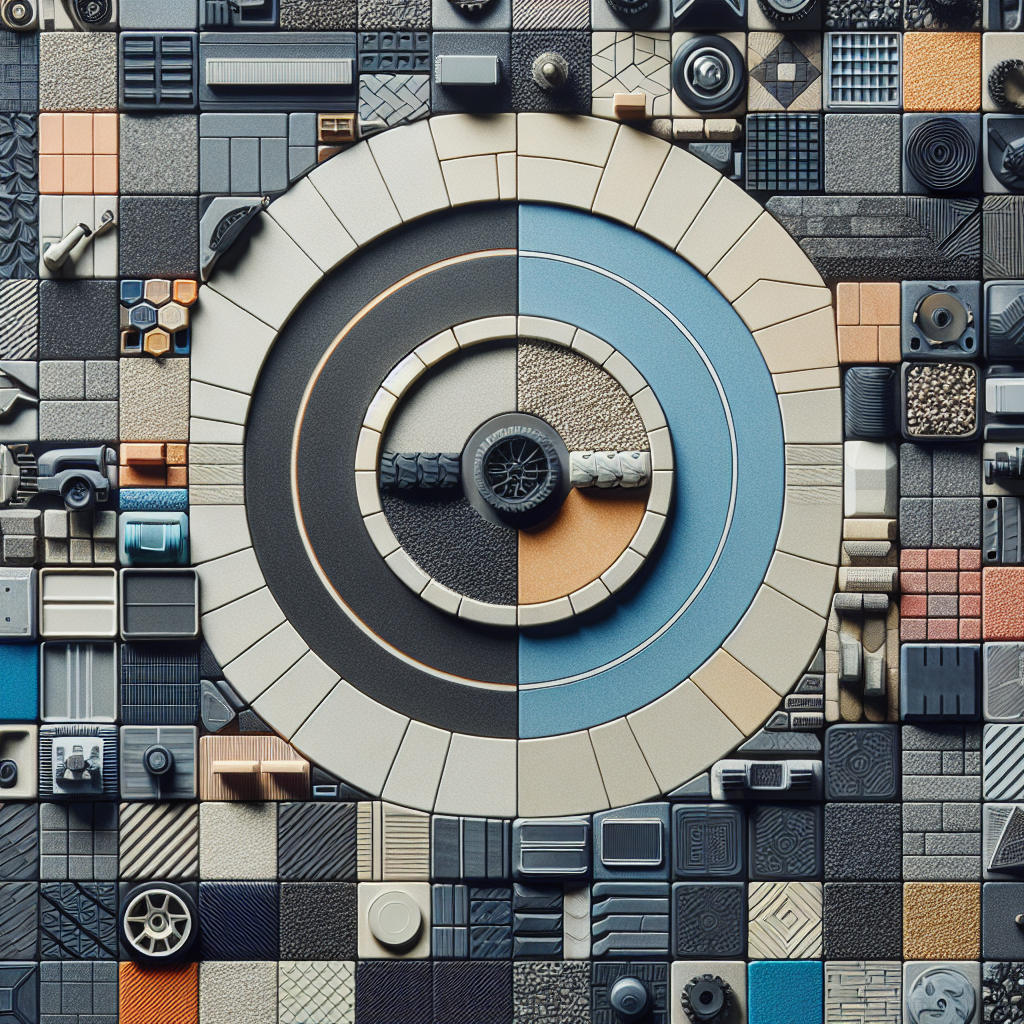
Gravel Flooring
Gravel flooring is a cost-effective and easy-to-install option for carports. Although it has its advantages, there are also some drawbacks and specific maintenance considerations that you should keep in mind.
Benefits of Gravel Flooring
Gravel is a budget-friendly option for carport flooring. It provides good drainage, preventing water from pooling or causing damage. It is also resistant to oil stains and chemicals, making it easy to clean. Additionally, gravel is a versatile material that can be customized by choosing different sizes and colors.
Drawbacks of Gravel Flooring
One drawback of gravel flooring is that it can shift and become uneven over time, especially under heavy loads or frequent traffic. This can make it difficult to walk on or roll objects over smoothly. Another consideration is that gravel can track indoors, potentially causing a mess in your home. Additionally, regular maintenance is required to fill in any depressions and keep the gravel level.
Maintenance Tips
To maintain gravel flooring in your carport, it is important to regularly rake or level the stones to ensure a smooth surface. Any depressions should be filled in promptly to prevent further shifting. If the gravel becomes compacted or tracks indoors, additional stones may need to be added. Regular inspections should be conducted to identify and address any drainage issues to prevent water damage.
Pavers
Pavers offer a visually appealing and durable option for carport flooring. Understanding the benefits, drawbacks, and maintenance requirements of pavers will help you decide if they are the right choice for your carport.
Benefits of Pavers
Pavers come in a variety of colors, shapes, and textures, allowing for creative and customizable designs for your carport. They are known for their durability and strength, capable of withstanding heavy loads and traffic. Pavers are also resistant to oil stains and chemicals, making them easy to clean. Additionally, individual pavers can be replaced if damaged, eliminating the need for extensive repairs.
Drawbacks of Pavers
One drawback of pavers is their relatively higher cost compared to other flooring options. Professional installation may also be required to ensure proper leveling and stability. Additionally, the joints between pavers can collect dirt and debris, requiring regular cleaning and maintenance to keep the surface looking clean and neat.
Maintenance Tips
To maintain pavers in your carport, it is recommended to regularly sweep or rinse off dirt and debris. Periodically, you may need to use a mild detergent and a scrub brush to clean the surface and remove any stains. If the joint sand becomes loose or eroded, it should be replaced to maintain the stability and appearance of the pavers.
Asphalt
Asphalt is a popular choice for carport flooring due to its durability and smooth surface. Understanding the benefits, drawbacks, and maintenance requirements of asphalt will help you decide if it is the right flooring option for your carport.
Benefits of Asphalt
Asphalt provides a smooth and level surface for your carport, making it easy to walk on and park vehicles. It is also resistant to oil stains and chemicals, reducing the risk of damage and making it relatively easy to clean. Additionally, asphalt is a cost-effective option compared to some other materials, making it an appealing choice for those on a budget.
Drawbacks of Asphalt
One drawback of asphalt is that it may require periodic sealing to maintain its appearance and prevent cracking. Over time, asphalt can fade and deteriorate due to exposure to UV rays and weather conditions. It is also important to note that asphalt can soften in extreme heat, potentially causing indentations or marks under heavy loads or hot tires.
Maintenance Tips
To maintain asphalt flooring in your carport, it is recommended to regularly sweep or blow off dirt and debris. Any oil or chemical spills should be cleaned up promptly to prevent staining or damage. Periodic sealing should be done to protect the asphalt from moisture and extend its lifespan. Additionally, repairs should be made promptly to prevent minor cracks from spreading and compromising the integrity of the surface.
Rubber Mats
Rubber mats offer a versatile flooring option for carports, providing comfort and traction. Understanding the benefits, drawbacks, and maintenance requirements of rubber mats will help you decide if they are the right choice for your carport.
Benefits of Rubber Mats
Rubber mats provide excellent traction, making them a safe option for walking in wet conditions or on slippery surfaces. They offer cushioning and fatigue relief, making them comfortable for long periods of standing. Rubber mats are also resistant to impact and vibration, protecting the surface and reducing noise. Additionally, they are relatively easy to clean and maintain.
Drawbacks of Rubber Mats
One drawback of rubber mats is that they may not be suitable for heavy vehicles or high-traffic areas. Depending on the thickness and quality of the mats, they can wear down or tear under heavy loads or frequent use. Another consideration is that rubber mats can be more challenging to clean compared to some other materials, as dirt and debris can get trapped in the textured surface.
Maintenance Tips
To maintain rubber mats in your carport, it is important to regularly sweep or vacuum to remove dirt and debris. For heavier cleaning, you may need to use a mild detergent and a scrub brush. It is also recommended to periodically rotate the mats to ensure even wear. If any mats become damaged or worn, they should be replaced promptly to maintain safety and functionality.
Interlocking Tiles
Interlocking tiles provide a convenient and customizable option for carport flooring. Understanding the benefits, drawbacks, and maintenance requirements of interlocking tiles will help you decide if they are the right choice for your carport.
Benefits of Interlocking Tiles
Interlocking tiles offer ease of installation, allowing you to create a custom flooring design without the need for adhesives or professional installation. They come in a variety of materials, such as rubber, PVC, and polypropylene, offering different levels of durability and aesthetic options. Interlocking tiles are resistant to impact, making them suitable for heavy loads and high-traffic areas. They are also relatively easy to clean, and if any tiles become damaged, they can be replaced individually.
Drawbacks of Interlocking Tiles
One drawback of interlocking tiles is that they may be more expensive than some other flooring options, depending on the material and design chosen. Additionally, some interlocking tiles may have visible seams or joints, which may not be to everyone’s aesthetic preference. Another consideration is that some materials, such as rubber, may emit a strong odor initially.
Maintenance Tips
To maintain interlocking tiles in your carport, it is recommended to regularly sweep or vacuum to remove dirt and debris. Occasional wet mopping with a mild detergent can be done as needed for heavier cleaning. Inspecting the tiles periodically for any signs of wear or damage will allow you to replace any individual tiles in a timely manner, ensuring the longevity and appearance of the flooring.
Epoxy Coating
Epoxy coating offers a sleek and durable option for carport flooring. Understanding the benefits, drawbacks, and maintenance requirements of epoxy coating will help you decide if it is the right choice for your carport.
Benefits of Epoxy Coating
Epoxy coating provides a seamless and chemical-resistant surface for your carport, making it easy to clean and maintain. It is available in different colors and finishes, allowing for customization to suit your design preferences. Epoxy coating is resistant to impact, making it suitable for heavy loads and high-traffic areas. Additionally, it can enhance the brightness and reflectivity of the space due to its glossy finish.
Drawbacks of Epoxy Coating
One drawback of epoxy coating is that it requires proper surface preparation and installation, which can be time-consuming and may necessitate professional assistance. The installation process typically involves multiple steps, including surface cleaning, etching or grinding, application of the epoxy coating, and topcoat sealing. Another consideration is that the surface can become slippery when wet, requiring additional precautions for safety.
Maintenance Tips
To maintain epoxy coating in your carport, it is recommended to regularly sweep or mop with a pH-neutral cleaner to remove dust and dirt. Spills should be cleaned up promptly to prevent staining. It is important to avoid using abrasive cleaners or tools that can scratch the surface. Periodic topcoat sealing may be necessary, depending on the level of foot traffic and wear. Additionally, it is recommended to avoid dragging heavy or sharp objects across the surface to prevent damage.
Hardwood Flooring
Hardwood flooring adds a touch of elegance and warmth to a carport. Understanding the benefits, drawbacks, and maintenance requirements of hardwood flooring will help you decide if it is the right choice for your carport.
Benefits of Hardwood Flooring
Hardwood flooring is known for its natural beauty and durability, making it a desirable option for carports. It can withstand heavy loads and is resistant to wear and tear when properly sealed and maintained. Hardwood provides a warm and inviting atmosphere, creating a cozy environment for your carport. It is available in a variety of wood species and finishes, allowing for customization to match your design preferences.
Drawbacks of Hardwood Flooring
One drawback of hardwood flooring is that it can be susceptible to moisture damage if not properly sealed. Exposure to excessive moisture or standing water can cause warping, buckling, and other forms of damage. Additionally, hardwood can fade or darken over time when exposed to UV rays, requiring periodic refinishing to restore its natural beauty. Another consideration is that hardwood flooring can be more expensive compared to some other flooring options.
Maintenance Tips
To maintain hardwood flooring in your carport, it is important to promptly clean up any spills or moisture to prevent damage. Regular sweeping or vacuuming will remove dust and dirt that can scratch the surface. Periodic refinishing or resealing may be necessary to protect the wood and maintain its appearance. It is also recommended to use rugs or mats in high-traffic areas to minimize wear and tear. Avoid placing heavy objects directly on the wood to prevent indentations, and be cautious of dragging or sliding items to avoid scratches or gouges.
